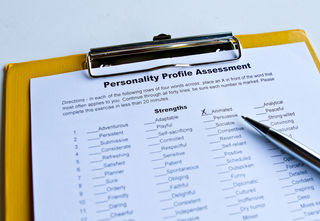Personality
How Do You Diagnose a Personality Disorder?
A new memo mandates training in personality disorder diagnosis in the U.K.
Posted November 6, 2019 Reviewed by Gary Drevitch
In an editorial published on October 23, 2019, in the journal Medicine, Science, and Law, it was reported that in press is a manuscript in which “the Royal College of Psychiatrists recommends that all psychiatrists should be trained in the assessment and diagnosis of personality disorder.” Given this anticipated recommendation—the need for psychiatrists to assess personality disorders (PDs)—some measures, methods, and considerations regarding diagnosing personality disorders will be discussed below.
There are various methods—techniques and instruments—for diagnosing personality disorders in clinical practice. There are psychometric self-report scales and projective tests as well as structured, semi-structured, and open-ended interviews. Depending on the setting, archival data may be available, such as medical, educational, or criminal records. Collateral reports (teachers, co-workers, peers, and family member descriptions of the patient) can enhance the accuracy and validity of PD diagnosis. The length and method(s) used during personality disorder assessment will vary considerably by setting, profession, and training.
Ideally, clinicians should integrate best practices from research as much as possible while protecting the therapeutic frame and alliance. In other words, introducing time-consuming, tedious formal task requirements such as structured clinical interview questions, answers, and recording may rupture an existing strong therapeutic alliance or prevent the establishment of one. However, it may also be possible and beneficial to comfortably integrate structured interview into a psychotherapeutic context. It will depend on the unique characteristics of the patient and clinician and the interpersonal matrix that they occupy intersubjectively.
Structured Clinical Interviews
There are two gold-standard structured interview techniques for diagnosing personality disorder: the Structured Clinical Interview for Personality, Fourth Edition, and the International Personality Disorder Examination interview, published by the WHO. The former may be more consistent with the American psychiatric nosology while the latter is more consistent with international psychiatric diagnosis as defined in the International Classification of Disease (ICD) Manual. There are not many substantial differences between the two, and they can often be used interchangeably. Each of these protocols could last up to three hours and require a trained, often doctoral-level interviewer.
Psychiatric Evaluation/Semi-Structured Interview
General questions about past interpersonal, affective, and behavioral patterns are embedded in an initial intake evaluation or psychiatric evaluation. The questioning is guided broadly by assessment of the impact of any given pattern of behavior on functionality.

Questionnaires
In routine outpatient clinical practice, a self-report questionnaire may provide a quick and easy way to get some relevant personality data without intruding excessively on the psychotherapy process. I recommend utilizing relatively brief questionnaires if one has time constraints or other counter-transference related reasons (e.g., clinician feels the patient won’t respond well to longer, more formal process). The Experiences in Close Relationship, short form, is less than 20 items scored on a Likert scale that yields personality disorder-relevant variables but labels the constructs it measures in the language of attachment theory.
More directly applicable to PDs are measures that are a bit longer such as the IPDE-SQ or the SIDP-IV screening questionnaire. Personality test scores reflecting five-factor or interpersonal circumplex assessment are also relevant but neither necessary nor enough for PD diagnosis. Some measures are specific to the core trait of a given PD: RSQ for AVPD and RSAS for SPD.
Implicit Assessment of Personality Pathology
Projective testing, e.g. TAT or Rorschach Ink Blot, typically occurs in the context of a comprehensive test battery but can be used help assess PDs in a psychotherapy context. In-depth feedback while explaining the assessment's limitations are recommended to help a person feel understood and gain insight into their own mind. Over the course of psychotherapy, countertransference, or how the clinician feels in the room with the patient, can sometimes be used diagnostically, particularly in connection to the diagnosis of PDs.
Multi-Method Diagnosis
Some of these methods are better than others for diagnosing personality disorders. The best way to diagnose personality disorders will be dictated by the goals of the patient, time constraints, and other contextual issues. All other things being equal, the ideal personality disorder diagnostic process would involve all the above measures and methods while also permitting the patient's personality pattern to reveal itself naturally over the course of psychotherapy as reflected in the interpersonal dynamics between clinician and patient.
References
Royal College of Psychiatrists. Services for people diagnosed with personality disorder (in press).
Yakeley, J. (2019). Personality disorder: Complexity, countertransference, and co-production. Medicine, Science, and Law. Oct 22, 2019.


